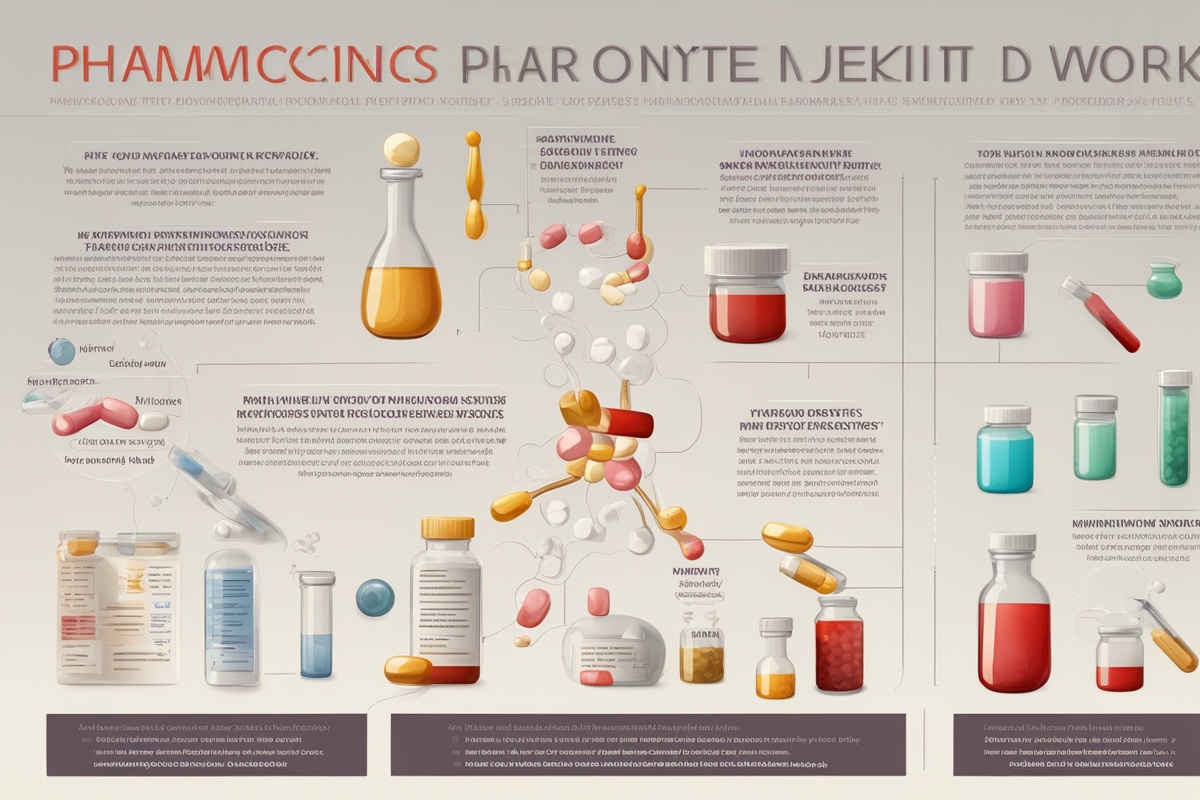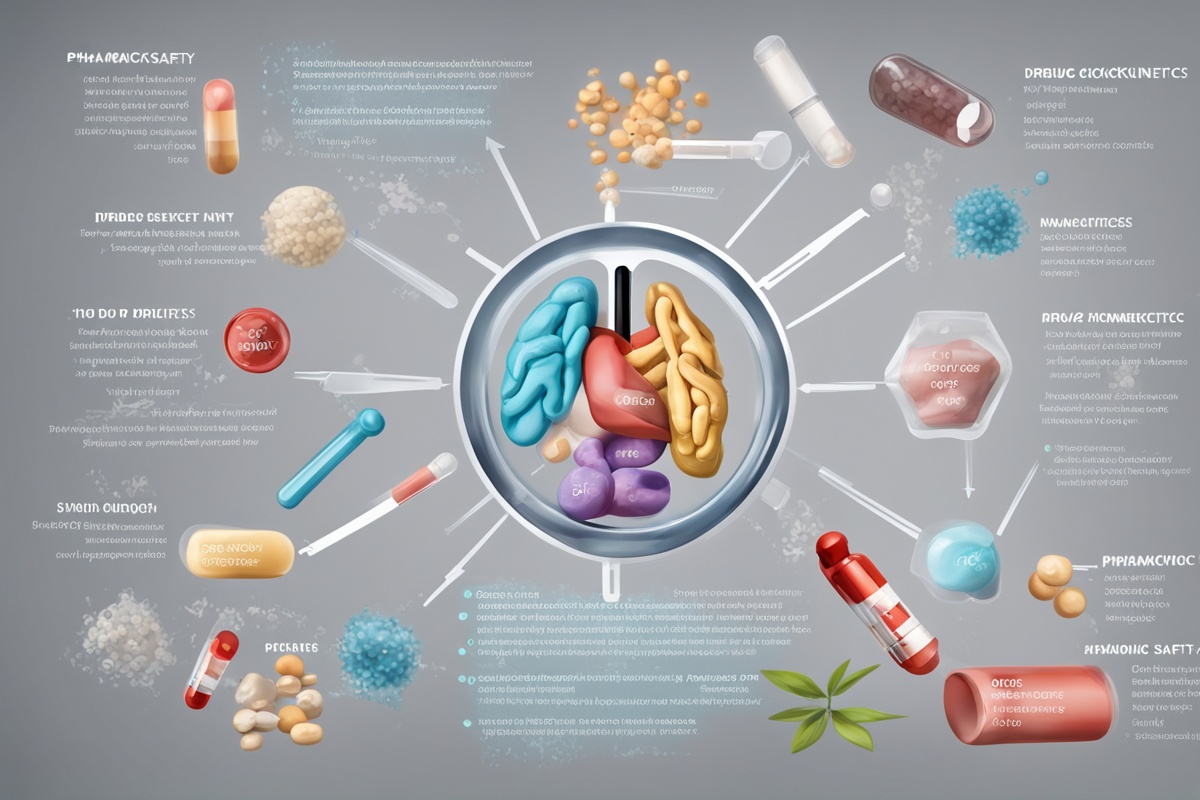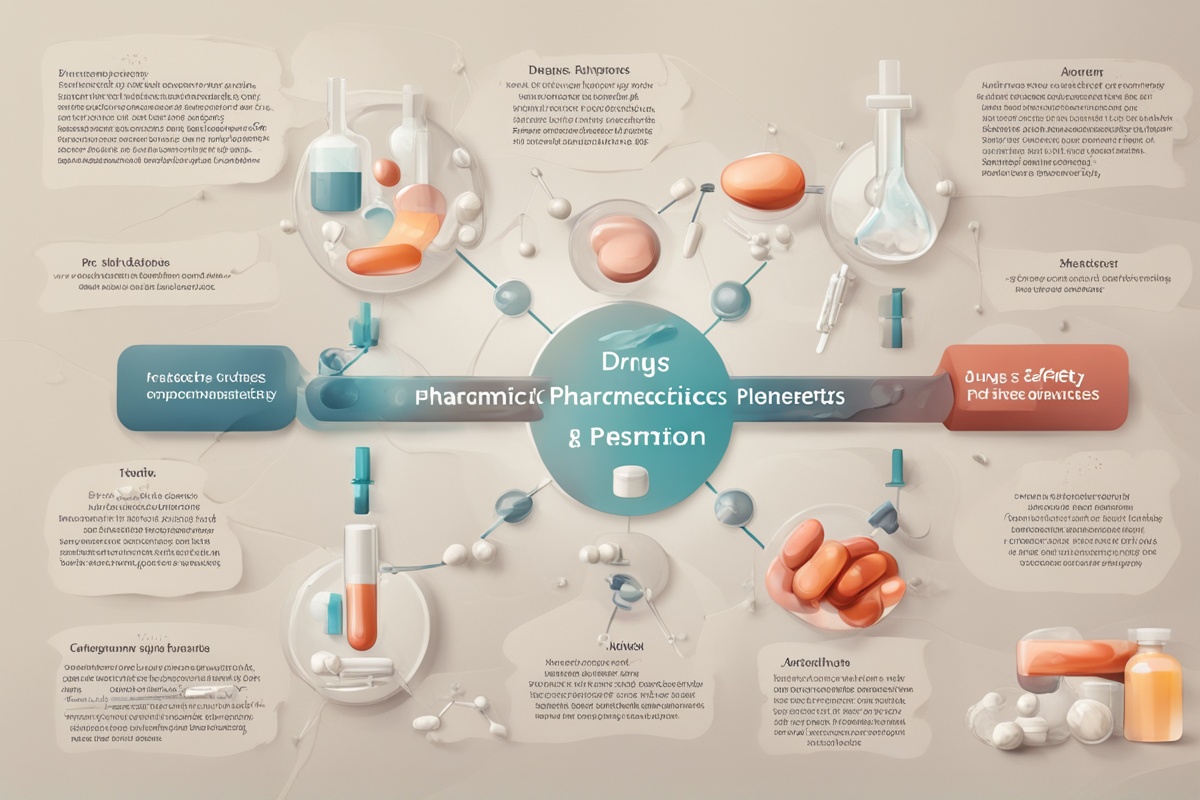Understanding how drugs behave in the body is a bit like unraveling a mystery. One key piece of the puzzle? Pharmacokinetics. It’s the science of what the body does to a drug—how it absorbs, distributes, metabolizes, and excretes it. But today, let’s zoom in on a critical aspect: Pharmacokinetics Effects on Drug Metabolism. How does the journey of a drug through your system impact the way it’s broken down? Why should you care? Whether you’re a healthcare professional, a student, or just someone curious about why medications work the way they do, this deep dive will shed light on the intricate dance between pharmacokinetics and metabolism. Stick with me as we explore this fascinating topic with real-world insights and practical takeaways.
What Is Pharmacokinetics and Why Does It Matter for Drug Metabolism?
At its core, pharmacokinetics (often abbreviated as PK) is about tracking a drug’s journey through the body. Think of it as a roadmap with four main stops: absorption (how the drug gets into your bloodstream), distribution (where it goes in your body), metabolism (how it’s broken down), and excretion (how it leaves). Each of these stages influences how a drug works—and metabolism, in particular, is where things get really interesting. Metabolism is the body’s way of transforming a drug into something it can handle, often turning active compounds into inactive ones (or sometimes the other way around). But here’s the kicker: pharmacokinetics doesn’t just happen to metabolism—it directly shapes it. For instance, if a drug isn’t absorbed well, there’s less of it to metabolize. If it’s distributed unevenly, metabolism might occur faster in some tissues than others. Understanding these effects isn’t just academic; it’s the difference between a drug working as intended or causing unexpected side effects.
How Absorption Influences Drug Metabolism
Let’s start at the beginning: absorption. This is where a drug enters your bloodstream, whether through a pill you swallow, an injection, or a patch on your skin. Imagine you’ve just taken a painkiller for a nagging headache. If it’s a fast-dissolving tablet, it might hit your bloodstream quickly, flooding your liver—the body’s main metabolic hub—with a high concentration of the drug. That can speed up metabolism, sometimes leading to a shorter duration of action. On the flip side, a slow-release formulation trickles in over hours, giving your liver a steadier workload. I’ve seen this firsthand in clinical settings where patients on extended-release meds report more consistent relief compared to those on immediate-release versions. The takeaway? The rate and extent of absorption—dictated by pharmacokinetics—set the stage for how much drug is available for metabolism at any given time. Get this wrong, and you might end up with too little drug to be effective or too much, risking toxicity.
The Role of Distribution in Shaping Metabolic Outcomes
Once a drug is absorbed, it doesn’t just float aimlessly—it’s distributed to various tissues and organs. This step in pharmacokinetics can dramatically affect metabolism. Why? Because not all tissues metabolize drugs at the same speed or in the same way. The liver, for instance, is like the body’s chemical factory, packed with enzymes (like cytochrome P450) that break down drugs. But if a drug binds tightly to proteins in the blood or gets stored in fat tissue, less of it reaches the liver right away. I recall a case study involving a lipid-soluble antidepressant; its distribution into fat delayed metabolism, prolonging its effects in the patient’s system—sometimes for better, sometimes for worse. Distribution also explains why some drugs have wildly different effects in different people. Ever wonder why your friend feels a medication’s kick faster than you do? Body composition, blood flow, and even age can tweak how a drug is distributed, and thus, how it’s metabolized.
Metabolism Itself: The Pharmacokinetic Core
Now, let’s get to the heart of the matter—metabolism. This is where the body, mainly through the liver, chemically alters a drug to make it easier to eliminate. But here’s where pharmacokinetics effects on drug metabolism really shine. The speed and efficiency of metabolism depend on earlier PK stages like absorption and distribution, as well as on factors like enzyme activity. Some drugs are “prodrugs,” meaning they’re inactive until metabolized into their active form—think of codeine turning into morphine in the body. Others are broken down into waste products. A personal anecdote: I once worked with a patient whose genetic profile showed a sluggish CYP2D6 enzyme, slowing the metabolism of certain pain meds. The result? The drug lingered longer, increasing side effects. This is a classic example of how pharmacokinetics doesn’t just influence metabolism—it can make or break a drug’s safety and efficacy. Knowing a patient’s metabolic profile can be a game-changer in tailoring treatments.
Excretion and Its Feedback on Metabolism
The final stop in the pharmacokinetic journey is excretion—getting the drug (or its metabolites) out of the body, usually via urine or bile. But don’t think this is just an endpoint. Excretion can loop back and affect metabolism. How so? If a drug or its metabolites aren’t cleared quickly—say, due to kidney issues—they can build up, potentially slowing further metabolism or even triggering toxicity. Picture this: an elderly patient with reduced kidney function takes a standard dose of a drug. The slower clearance means more drug hangs around, overwhelming the liver’s metabolic capacity. I’ve seen this play out with medications like metformin, where careful monitoring of kidney function is non-negotiable. The lesson here is clear: pharmacokinetics is a cycle, not a straight line. Each phase, including excretion, ripples back to influence how a drug is metabolized.
Practical Implications: How to Use This Knowledge
So, what does all this mean for you or your loved ones? Whether you’re a patient or a provider, understanding pharmacokinetics effects on drug metabolism can empower better decisions. For healthcare pros, it’s about personalizing treatment—adjusting doses based on a patient’s absorption quirks, distribution patterns, or metabolic enzyme activity. Genetic testing, for instance, is becoming a powerful tool to predict how someone will metabolize a drug. For patients, it’s about asking the right questions: Why does this medication make me drowsy while it perks up my sibling? Could my diet or other meds be messing with absorption or metabolism? Small tweaks—like taking a drug with food to slow absorption—can make a big difference. And here’s a pro tip from years of observation: always report unusual side effects to your doctor. They might signal a pharmacokinetic hiccup in how your body is handling metabolism.
Let’s not sugarcoat it—pharmacokinetics is complex. But it’s also a window into why drugs don’t work the same for everyone. From absorption setting the pace to excretion closing the loop, each step tweaks how a drug is metabolized, and thus, how it affects you. My goal here isn’t just to throw science at you; it’s to equip you with insights to navigate meds more wisely. After all, isn’t that what understanding is all about—turning “why” into “how”?
References
- University of Minnesota Extension – Pharmacokinetics Basics
- Missouri Botanical Garden – Pharmacology Insights
- Penn State Extension – Factors Affecting Drug Metabolism
- New York Botanical Garden – Pharmacokinetic Studies
- University of Illinois Extension – Pharmacology Resources
Disclaimer: This article is for informational purposes only, based on general research and experience—it’s not a substitute for professional advice. The content provided here is intended to offer insights into pharmacokinetics and drug metabolism, but it should not be taken as medical guidance or a replacement for expert consultation. Individual health conditions, medications, and other factors can significantly alter how drugs behave in the body. Always consult a qualified healthcare professional, such as a doctor or pharmacist, for personalized guidance tailored to your specific needs and circumstances. Your health and safety are paramount, and professional input ensures the best possible outcomes when dealing with medications or treatments.
This content is for informational purposes only and not a substitute for professional advice.



